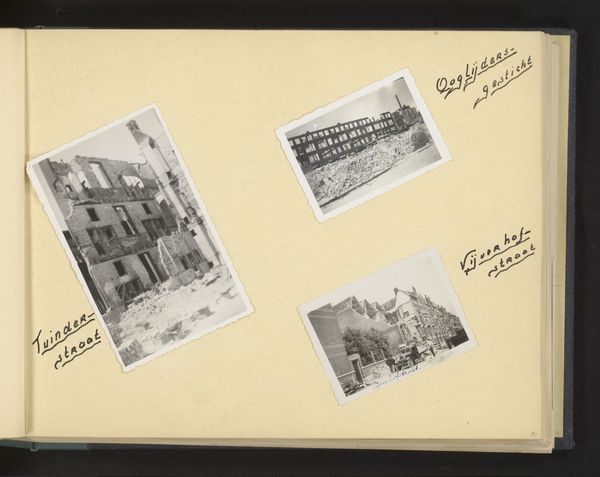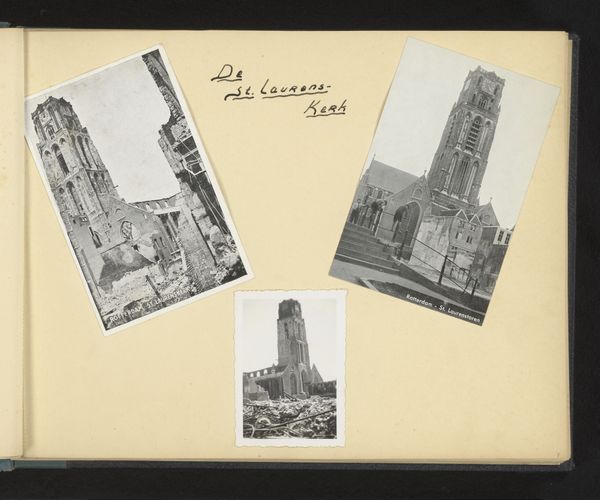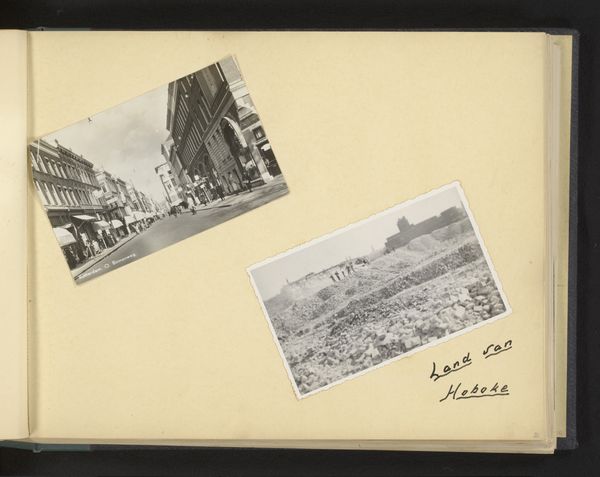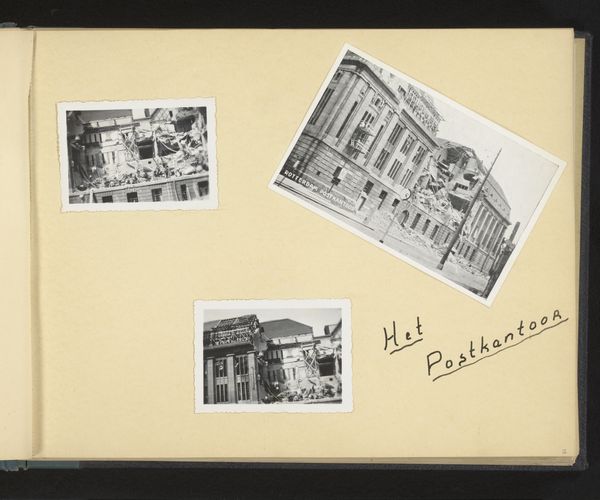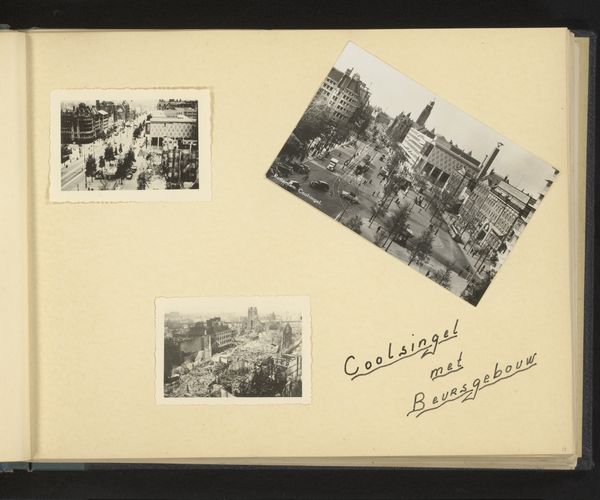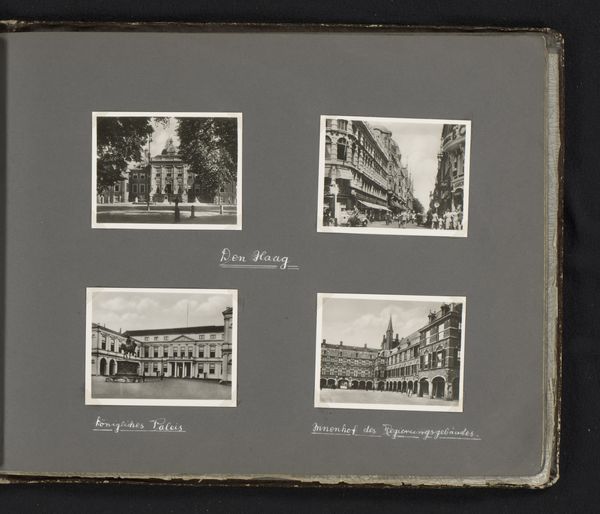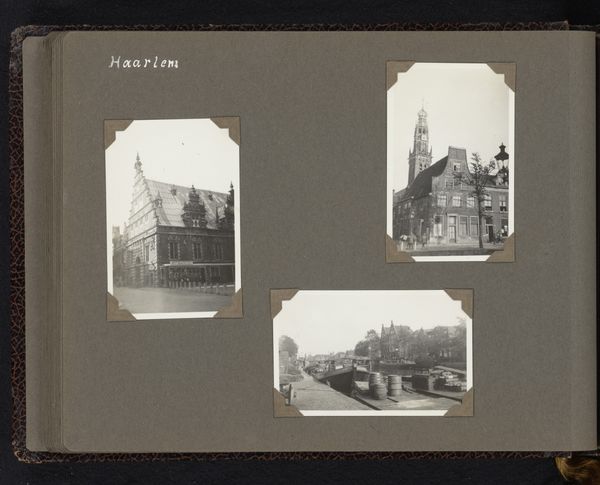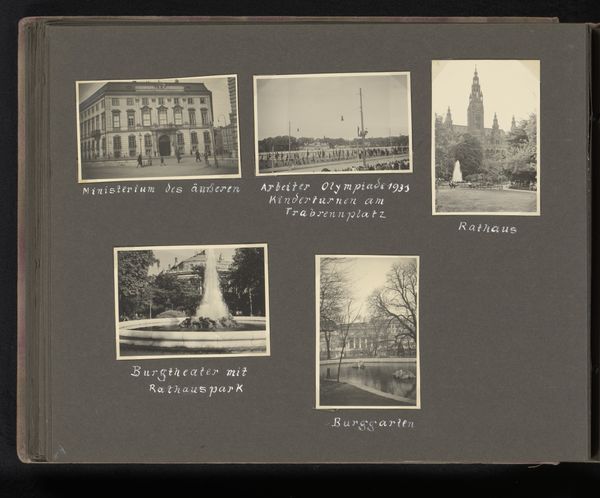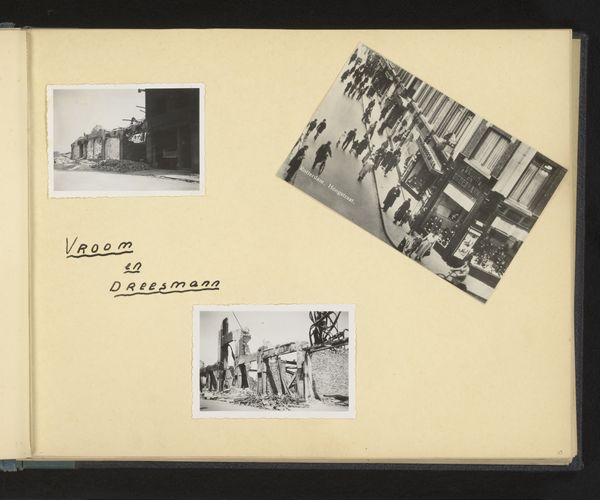
print, paper, photography, albumen-print
#
aged paper
#
homemade paper
#
paper non-digital material
#
paperlike
# print
#
landscape
#
personal journal design
#
paper
#
photography
#
personal sketchbook
#
fading type
#
thick font
#
publication mockup
#
cityscape
#
sketchbook art
#
albumen-print
Dimensions: height 90 mm, width 140 mm, height 237 mm, width 303 mm
Copyright: Rijks Museum: Open Domain
Editor: This is "Johan van Oldenbarneveldstraat met RK. kerk" by Alie Rondberg-Vrauwdêunt, created in 1940. It looks like a page from a personal album featuring albumen prints, a cityscape. It strikes me as a stark record of destruction; what details stand out to you? Curator: For me, the focus is on the *how* of the piece: albumen prints meticulously arranged and annotated on a page. Consider the albumen print itself—a process requiring skilled labor, the sourcing and manipulation of materials like silver nitrate and egg whites. The arrangement, the handwriting... It speaks of an individual documenting a specific experience, carefully assembling a narrative from fragments. The question becomes, what was the access to the resources, what were the economic forces at play allowing them to do it and share their personal view? Editor: That's fascinating. I was so focused on the imagery, the destroyed buildings, I hadn’t really thought about the making of it, its materiality. Why focus on the method? Curator: By examining the means of production – the photographic process, the crafting of the album page – we gain insight into the social context. Photography in 1940 wasn’t as instantaneous or democratic as it is today. The materials themselves hold value. Labor to put the prints together has inherent value. Also, by seeing the scene within the personal album we may have the intent of its creation changed – more personal versus distributed for propaganda purposes. Editor: So, by looking at the materials and method, we are actually uncovering social and economic information, adding depth to the work? Curator: Exactly! It shifts our understanding from just a record of damage to a commentary on access, resources, and the individual's role in bearing witness. The choice of material, whether it's paper or the photographic emulsion, tells a story. Editor: This has definitely given me a new way of looking at art. Curator: And seeing art this way reveals history embedded within everyday objects.
Comments
No comments
Be the first to comment and join the conversation on the ultimate creative platform.

